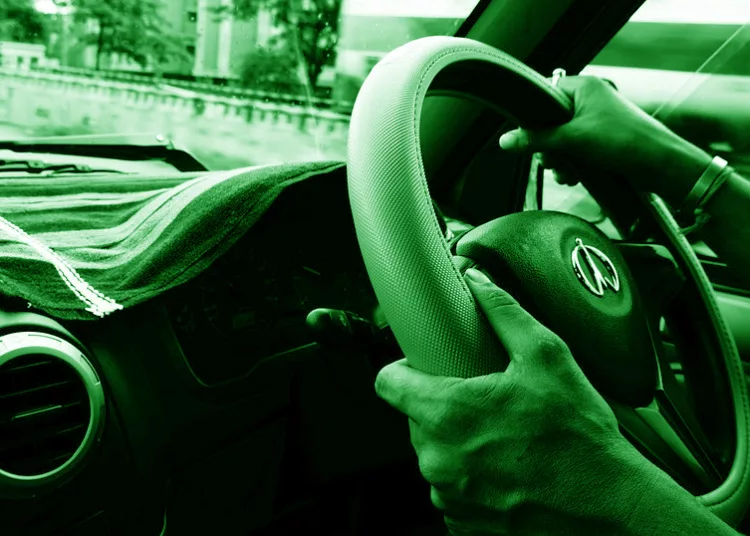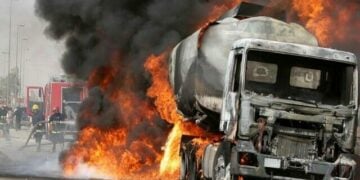For over three weeks, I have been deliberate in my treatment of the issue of strapping children in cars with the appropriate child seat or restraints. I am hoping to draw the curtain on this subject today hoping that I can focus on other subject matter.
As a recap, I need to remind you that the Christmas season is here. While we indulge in our travelling habits, we must adhere to the provisions of sections 58(3&4) of the National Road Traffic Regulations, 2004 which specifies the use of seat belt/child restraints by all occupants.
The safest way to carry that child is to use a child seat that is suitable for his or her weight and size. Always remember that even in a minor crash, an unrestrained child would be thrown from the car through one of the windows.
Also, please know that in a crash at just 30km/ph, an unrestrained child would be thrown forward with a force 30 to 60 times their body weight. They would be thrown about inside the vehicle, injuring themselves and quite seriously injuring (or even killing) other people inside the vehicle. They are also likely to be ejected from the car through one of the windows.
Do you know that it is not safe to hold a child on your laps? That in a crash, the child could be crushed between your body and parts of the car’s interior. That even if you were using a seatbelt, the child would be torn from your arms, and that you would not be able to hold onto him or her, no matter how hard you try.
Do you also know it is dangerous to put a seatbelt around yourself and a child or around two children? Or to carry that child or children in the front passenger’s seat or on your tummy as most of us do especially during school runs or rush hour. That the safest way for children to travel in cars no matter the distance, is in a child seat that is suitable for their weight or size.
An approximately child restraint, is one which conforms to the United Nations standard ECE Regulations 44-03, suitable for the child’s restraint are divided into categories, according to the manufacturer’s instructions. Child restraints are divided into categories, according to the weight of children for whom they are suitable. These correspond broadly to different age groups, but it is the weight of the child that is most important when deciding what type of child restraint to use. Some child restraints are capable of being converted as the child grows and therefore fit into more than one group or stage
For example, the rearward-facing babies up to 10kgs (22ibs) roughly from birth to six-nine months or for babies up to 13kg (29ibs) roughly from birth to 12-15 months. These two can be used in the front or rear of the car. It is safer to put them in the rear. Do not put them in the front passenger seat if there is a passenger airbag. Rearward-facing seats provide greater protection for the baby’s head, legs and spine than forward facing seats. So it is best to keep your baby in the rearward-facing seats for as long as possible. Only move them to a forward-facing seat once they have exceeded the maximum weight for the baby seat or the top of their head is higher than the top of the seat.
The forward-facing child seat is for the children weighing 9-18kgs (20-40ibs) roughly from 9months – 4years.Once children have outgrown a rearward-facing seat, the best option is to use a giving (babies from birth to 15 months )seat with an integral harness- the large area of the harness helps to reduce the risk of injury if there is a crash-the bottom attachment between the legs will also prevent the child from sliding under and out of the harness. They can be used in the front or rear of the car, but it is safer to put them in the rear, especially if there is a passenger airbag in the front.
Once again it is safer to keep children in this type of system until they have outgrown it. Only move your child to a booster seat once they have exceeded the maximum weight for the child seat or the top of their head is higher than the top of the seat. Booster seats and booster cushions are used for children.
Modern booster seats are designed for children between 15kg and 36kg (33-72ibs) i.e. 4-11 years. The law requires children travelling in cars to use the correct restraint until they are either 135cm in height or the age of 12 (whichever they reach first). After this, they must use an adult seatbelt. It is the driver’s responsibility to ensure that children under the age of 14 years are restrained correctly in accordance with the law.
However, it is the responsibility of the individual passenger to ensure that he or she is wearing the seatbelt at the age of 14 years and above. The safest option is to carry the same number of passengers as their seatbelts.
If you must carry a passenger for whom there is no seatbelt, it is better for the heaviest passenger to wear a seat belt because he would cause more severe injuries to other people in the car, if they are thrown out in a crash.
Ideally, like in the United Kingdom (UK), the passenger should face the penalty for defaulting. This is in addition to its effect on claims by the driver against motor insurance cover. We must however note that the most serious penalty of all for non-compliance with seatbelt or child restraint of all could be that you, your passenger or your child loses their lives.





